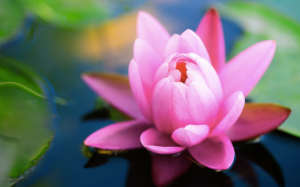Hanson, T. 2015. The Triumph of Seed. Basic Books, New York, New York. P143-160.
 http://geniusquotes.org/tag/best-coffee-quotes/
http://geniusquotes.org/tag/best-coffee-quotes/
“I can’t even imagine being addicted to something,” I said to my friend, Pat, as we waited in my car to board the ferry to Victoria. We were having a serious conversation about drug addictions.
“Yes, it’s hard to imagine what it would feel like to wake up every morning and the first thing on your mind is getting high,” Pat commented back. The conversation changed directions and we boarded the ferry. After our long day of driving, we finally had landed in Victoria.
“I REALLY need a coffee right now, I’m stopping at the first Tim Hortons I see,” I told Pat.
“Me too. I haven’t had a cup since this morning.” There was a brief pause before Pat then said, “you know what I just realized?” I asked him to go on. “You know how we said we couldn’t relate to drug addicts? Well we are addicts. We’re addicted to coffee.”
So naturally I chose the chapter on coffee of Hanson’s, “Triumph of the Seeds,” to blog about this week. The chapter discusses the history of coffee, the science of caffeine and how coffee has shaped society. I like the examples he uses to emphasize the points in his writing, as well as his subtle comparisons between coffee and alcohol which suggest the historic transition from alcohol to coffee had a major impact on society.
For example, when discussing the evolution of caffeine, Hanson discusses recent research that shows caffeine present in flower nectar may serve the purpose to trigger reward pathways in honeybees (pg. 148). This would function to keep the bees coming back to pollinate the flowers because, in a sense, they are addicted to the caffeine. I found this to be an extremely fascinating adaption for the plant. Hanson could’ve stuck to just talking about the insecticide properties of caffeine, but adding this recent research is what interested me to continue reading.
I found his aside on, the “Breakfast of Champions,” to be very funny. I felt like this wasn’t necessary information but it added some comedy to his writing. The thought of, “steaming-hot ale poured over bread or mush, with eggs, butter, cheese or sugar added on special occasions,” sounds more like a dare than a typical breakfast (pg. 151). Thanks, but I think I’ll stick with my morning cup of coffee.
Another part I enjoy about this chapter is when Hanson contrasts the conversations ones has over coffee compared to the conversations one has over beer (pg. 153). “To philosophers, writers, and other intellectuals, coffeehouses quickly became indispensable hubs for articulating and sharing ideas (pg. 153).” Even today, business and formal meetings happen at Starbucks. Ideas are shared over alcohol too but they tend not to be “good ideas.”
I also like that he brought up the point that with, “The Internet, texting, social media, and other digital innovations have created longer workdays and an expectation of constant connectivity, a perfect environment for the stimulating effects of coffee (pg. 155)”. It is very true that in today’s society there is a constant need to always be doing something and to be connected with people. This can be very energetically draining and it seems that for most people, coffee is the only way to make it through the day. As my friend Pat would say, “coffee doesn’t give me energy, it makes me not too tired to be myself.” Coffee has been integrated into our society so well we forget what it truly is. It is a secondary metabolite produced by plants that has evolved as a natural insecticide and addictive substance to make sure honeybees come back to pollinate. From a human perspective however, it is a delicious beverage that can be enjoyed with business partners, friends, family or alone. Whether or not we like to admit it, it is also something we simply cannot live without (seriously though, take a second and imagine a world without caffeine…).
